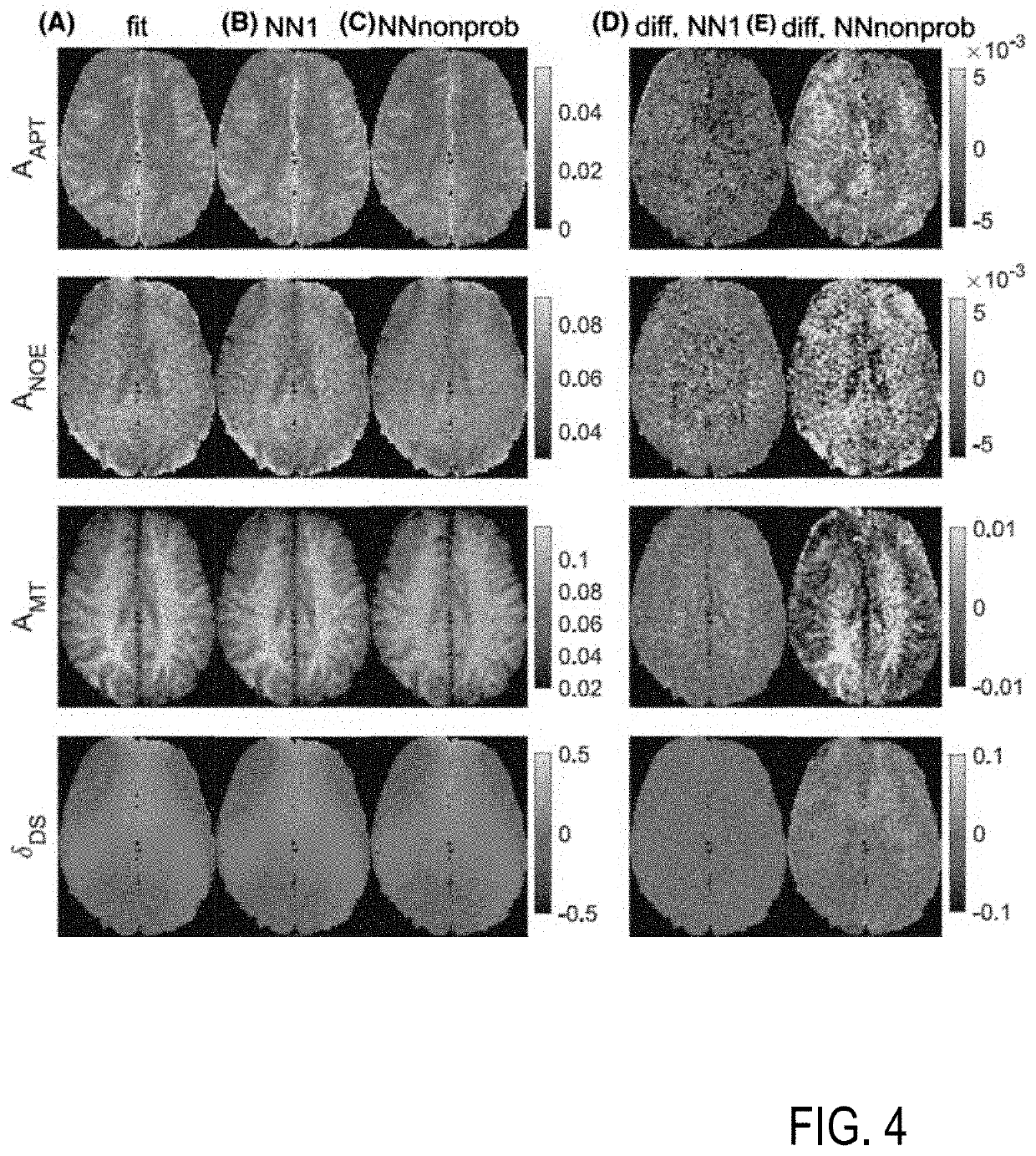Machine learning based processing of magnetic resonance data, including an uncertainty quantification
a technology of magnetic resonance data and uncertainty quantification, applied in the field of machine learning based processing of magnetic resonance data, including uncertainty quantification, can solve the problems of complex mathematical modeling before contrast generation, high cost, and high cost of modeling, so as to avoid limitations and disadvantages of conventional techniques, reduce processing costs, and improve reliability
- Summary
- Abstract
- Description
- Claims
- Application Information
AI Technical Summary
Benefits of technology
Problems solved by technology
Method used
Image
Examples
Embodiment Construction
[0077]Embodiments of the invention are described in the following with particular reference to the configuration of the neural network for MR data processing, including creating at least one uncertainty quantification measure. The invention preferably is implemented with an MRI scanner as it is known per se. Accordingly, details of the MRI scanner, the available control schemes thereof, available excitations and read-out sequences, available schemes of MR signal acquisition and types of MR data are not described as they are known per se from prior art. Exemplary reference is made to the processing of CEST data. The implementation of the invention is not restricted to this particular type of data, but rather possible with other MR contrasts, e. g. as mentioned above. Furthermore, exemplary reference is made to providing uncertainty maps as the at least one uncertainty quantification measure. It is to be noted, that a single quantitative error value or a group of error values can be p...
PUM
 Login to View More
Login to View More Abstract
Description
Claims
Application Information
 Login to View More
Login to View More - R&D
- Intellectual Property
- Life Sciences
- Materials
- Tech Scout
- Unparalleled Data Quality
- Higher Quality Content
- 60% Fewer Hallucinations
Browse by: Latest US Patents, China's latest patents, Technical Efficacy Thesaurus, Application Domain, Technology Topic, Popular Technical Reports.
© 2025 PatSnap. All rights reserved.Legal|Privacy policy|Modern Slavery Act Transparency Statement|Sitemap|About US| Contact US: help@patsnap.com



